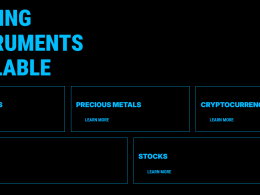In the fast-paced world of product development, understanding the preferences and needs of your target audience is paramount. Concept testing is a crucial step in this process, allowing companies to gauge consumer reactions before launching a new product. Traditionally, concept testing has been conducted in controlled environments, but there’s a growing trend towards in-home concept testing. This approach brings products directly into the homes of consumers for evaluation, and it’s proving to be a game-changer in terms of yielding superior product insights. In this article, we’ll explore why in-home concept testing is gaining popularity and why it’s a more effective approach than traditional methods.
The Traditional Approach to Concept Testing
Before delving into the advantages of in-home concept testing, let’s briefly examine the traditional approach. Historically, companies have relied on controlled settings such as focus groups or central locations to conduct concept testing. While these methods have their merits, they fall short in capturing the true essence of how a product fits into consumers’ lives.
- Controlled Environments: Traditional concept testing often occurs in artificial environments where participants are taken out of their natural settings. This can lead to biased feedback as people may react differently when they’re not in the comfort of their homes.
- Limited Interaction Time: In controlled settings, consumers have limited time to interact with a product concept. This time constraint can prevent them from forming a deep understanding of the product’s utility and functionality.
- Contextual Gap: Testing products outside of a home environment creates a contextual gap. People may provide feedback based on their immediate impressions, which may not align with how they would actually use the product in their daily lives.
- Observer Effect: The presence of researchers or moderators can influence participants’ behavior and feedback, skewing the results. This observer effect can make it challenging to obtain authentic reactions.
The Rise of In-Home Concept Testing
In-home concept testing, on the other hand, seeks to bridge these gaps by bringing the product directly into the homes of consumers. Here are some compelling reasons why this approach is gaining momentum:
1. Real-Life Context:
In-home concept testing allows consumers to evaluate a product in their natural habitat, where it’s intended to be used. This context is invaluable for understanding how the product fits into their daily routines and lifestyles. Whether it’s testing a kitchen appliance, a smart home device, or a personal care product, seeing it in action within the home setting provides invaluable insights.
2. Extended Interaction Time:
Unlike traditional concept testing, which may involve short sessions, in-home testing extends the interaction time. Participants have the opportunity to use the product over an extended period, which helps them form a more comprehensive opinion. This prolonged exposure often leads to more detailed and nuanced feedback.
3. Reduced Bias:
In-home concept testing minimizes the observer effect. Participants are not constantly aware of being watched or evaluated, allowing them to behave naturally and provide more authentic feedback. This reduction in bias leads to more accurate insights into their preferences and needs.
4. Better Understanding of Usage Patterns:
By observing how participants incorporate the product into their daily lives, researchers gain a deeper understanding of usage patterns. This information is invaluable for refining product features and marketing strategies. It also helps identify potential pain points that may not be evident in a controlled environment.
5. Greater Comfort and Convenience:
Testing products in the comfort of their own homes is a more convenient and comfortable experience for participants. This can lead to increased willingness to participate and a higher level of engagement, resulting in richer feedback.
Maximizing the Benefits of In-Home Concept Testing
While in-home concept testing offers numerous advantages, it’s essential to approach it strategically to maximize its benefits. Here are some key considerations:
1. Selecting the Right Participants:
Carefully select participants who represent your target audience. Ensure they mirror the demographics and psychographics of your intended market. This will help you obtain relevant and actionable insights.
2. Clear Objectives:
Define clear objectives for your concept testing. What specific aspects of the product are you evaluating? Are you looking for usability feedback, aesthetic preferences, or both? Having well-defined goals will guide your research and analysis.
3. Observation and Data Collection:
Use a mix of methods for data collection, including surveys, interviews, and observation. Capture both quantitative and qualitative data to gain a holistic view of participants’ experiences.
4. Iterative Testing:
Consider conducting multiple rounds of in-home concept testing. This iterative approach allows you to refine the product based on earlier feedback and test new iterations for further refinement.
5. Analyze Holistically:
When analyzing the data, consider the broader context of participants’ lives. How does the product fit into their daily routines? What emotions does it evoke? These insights can be as crucial as specific feedback on product features.
Conclusion
In-home concept testing is revolutionizing the way companies gather product insights. By bringing products directly into the homes of consumers, businesses can gain a deeper understanding of how their offerings fit into real-life contexts. This approach offers extended interaction time, reduced bias, and a clearer picture of usage patterns.









